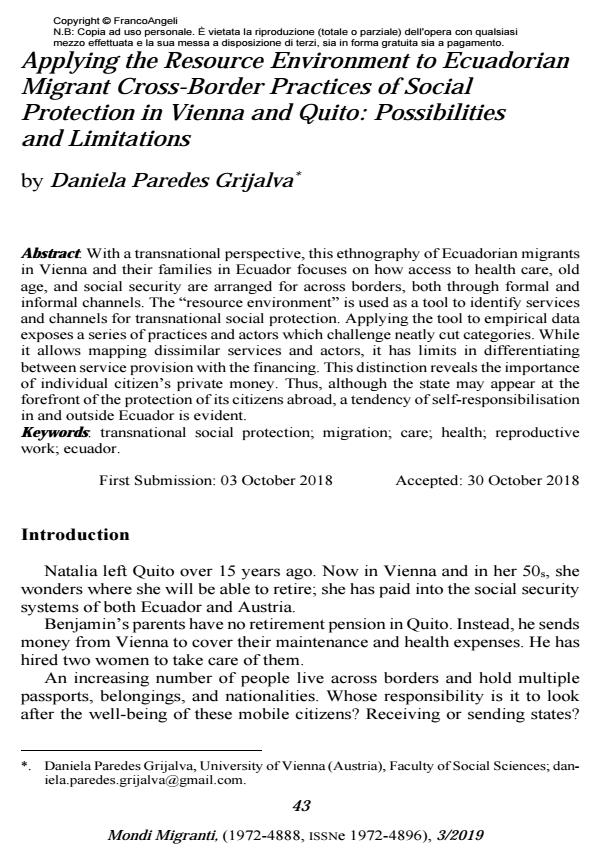Applying the Resource Environment to Ecuadorian Migrant Cross-Border Practices of Social Protection in Vienna and Quito: Possibilities and Limitations
Journal title MONDI MIGRANTI
Author/s Daniela Paredes Grijalva
Publishing Year 2019 Issue 2019/3
Language English Pages 20 P. 43-62 File size 205 KB
DOI 10.3280/MM2019-003003
DOI is like a bar code for intellectual property: to have more infomation
click here
Below, you can see the article first page
If you want to buy this article in PDF format, you can do it, following the instructions to buy download credits

FrancoAngeli is member of Publishers International Linking Association, Inc (PILA), a not-for-profit association which run the CrossRef service enabling links to and from online scholarly content.
With a transnational perspective, this ethnography of Ecuadorian migrants in Vi-enna and their families in Ecuador focuses on how access to health care, old age, and social security are arranged for across borders, both through formal and informal channels. The "resource environment" is used as a tool to identify services and channels for transnational social protection. Applying the tool to empirical data exposes a series of practices and actors which challenge neatly cut categories. While it allows mapping dissimilar services and actors, it has limits in differentiat-ing between service provision with the financing. This distinction reveals the im-portance of individual citizen’s private money. Thus, although the state may ap-pear at the forefront of the protection of its citizens abroad, a tendency of self-responsibilisation in and outside Ecuador is evident.
Keywords: Transnational social protection; migration; care; health; reproductive work; ecuador.
Daniela Paredes Grijalva, Applying the Resource Environment to Ecuadorian Migrant Cross-Border Practices of Social Protection in Vienna and Quito: Possibilities and Limitations in "MONDI MIGRANTI" 3/2019, pp 43-62, DOI: 10.3280/MM2019-003003